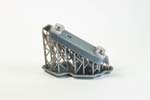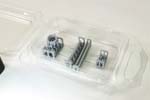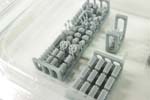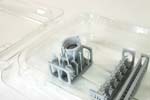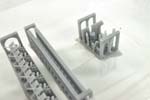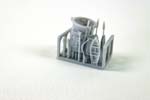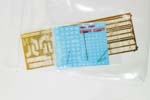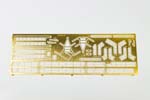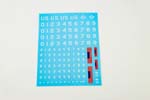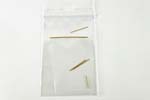LCI(L) - Type 351
Black Cat Models. 1/350th Scale Cast and Print Resin.
Reviewed by Devin Poore, September 2021
Based upon initial British requests and plans for a vessel to put large numbers of infantry on the beach in a single hull, the LCI (L) - Landing Craft Infantry (Large) - was a joint venture between Britain and the United States. Initial design was done in Britain, with plans sent overseas, allowing for final development and construction to be done in the more numerous shipyards of the United States.
The LCI(L) Type 351 class was the second of the three different variants of the ship. The 351 class had a rounded superstructure and different 20mm layout from the earlier ships. The earlier 351 examples, as depicted in this kit, have ramps that extend forward and on either side of the bow for troop disembarkation. Later ships would add a clam-shell opening bow to give troops better protection as they departed the ship.
LCI(L)s were typically crewed by three officers and 21 enlisted men, and were capable of carrying between 180 and 210 soldiers, depending on the time frame. Ships were initially armed with four 20mm mounts, later upgraded to five. Many of the ships were later equipped with a 40mm mount in the bow gun tub, and several ships were modified into rocket attack craft by placing rocket mounts on the side ramps, or in the well deck.
LCI(L)s served in both the European and Pacific theaters, mostly by the British and Americans. During the war several were transferred to the Soviet Union, and after the war, when the British and Americans deemed the craft no longer needed, the US transferred units to Argentina, China, France, Indonesia, and many other countries. Several of these units saw military or civilian service well into the 21st Century. Two LCI(L) hulls are preserved as museums, -731 in Portland, Oregon, and -1091 in Eureka, California.
USS LCI(L)-351 in May of 1943. Photo via Navsource.org
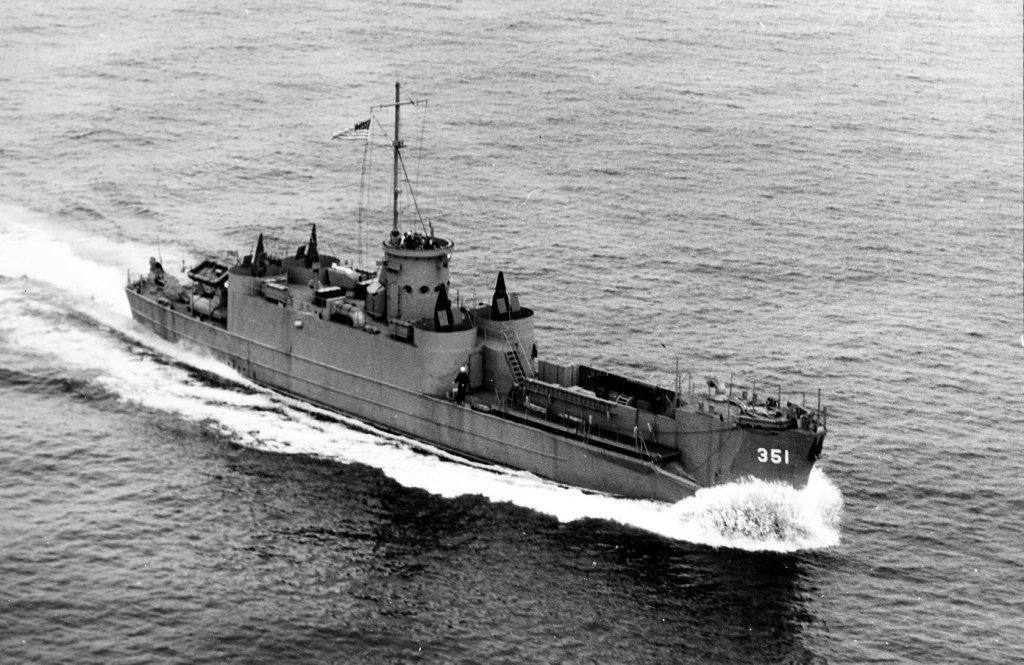
The largest part in the kit is the hull, which is a single piece resin 3D print, still attached to the printing raft and supports. Engraved lines show where to place the separate deckhouse print, and reinforcement ribbing in the forward well deck are sharp and fine. The forward gun tub has a removable resin plug, which protects the fine splinter shielding from cracking during shipping and handling. A very nice touch. One issue is that while the hull exhibits the typical layer lines that run parallel to the print platform that all 3D prints exhibit to some extent, my copy also has quite pronounced vertical lines. I'm assuming this is an anomaly, and, however, and they should be easy enough to fill with primer. The slab-sided nature of the hull will make sanding them smooth a minor issue that falls well within the expectations of, you know, model making.
Based upon online sources, the full size hull measured 158' 6" in length, which translates 5.43" in 1/350th scale. The kit's hull measures at just under 5 1/2" overall, which is pretty spot-on.
The deckhouse is likewise a single print, still attached to the printing raft and supports. The print artifacts will also need to be filled and sanded from this structure, but everything else is very well detailed, including fine step and door structures, and thin splinter shields for the four 20mm mounts.
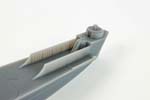
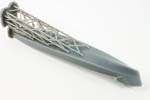

The remainder of the resin components of the kit are also 3D printed, but using a printer of higher resolution than were used for the hull and superstructure. These are the ultra-fine pieces that Black Cat Models is known for. The parts are mounted by double-sided tape in plastic clamshell blister packs. Black Cat excels in their packing of components, and I wish all other kit manufacturers would follow their example.
The first blister pack has the conical superstructure piece, as well as several pipes, vents, a life boat, and the prop shaft supports. This packet also contains the ramps for either side of the bow, and the six 20mm mounts, printed as very-detailed one-piece assemblies; even the gun sights are included. The other small print raft in this blister pack has very small items, such as the ship's anchors, fuel drums, piping, etc.
The second blister pack contains the remainder, and the smallest, of the printed parts. Balas life rafts make up one print raft, or Bar as they're referred to in the instructions, with another one containing 12 20mm ready service lockers, complete with locking handles. Other items that make up the tiniest of the pieces include deck chocks and bitts, hatches, cable reels, and what I believe to be smoke generators for the stern. I like the approach of having all of these deck details as separate pieces, as it makes painting them and the deck different colors much easier, as well as simplifying modifications the modeler may want to undertake.
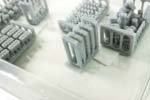
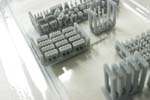

Photo-etched brass supplies the lifelines, rails, ladders and a couple of platforms. The brass is thin, only .007" thick, but it feels much sturdier and up to more handling than other model brass of similar thickness.
Several lengths of brass wire of various sizes are included, which are called out in the instructions for making various masts and antennas.
A small decal sheet includes two sized of United States flags, along with letters and numbers in several sizes so that any LCI(L) can be built from the kit.
The instructions are done to the typically high Black Cat Models standard. A 12 page color booklet, the instructions start with a color-coded parts inventory. From there construction commences using close-in CAD views, with all components denoted in their place with their part number and color coding. Even though there are a lot of tiny parts provided in the kit, construction is covered in only six pages, which appears to be more than sufficient. The final page of the instruction consists of color plan and profile views, with color callouts.
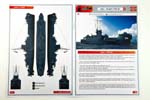
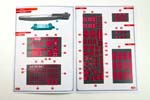


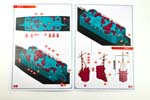
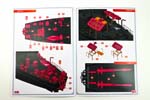
This is another winner from Black Cat Models. Aside from the slight issues with the hull print artifacts in my sample (again, I'm sure it's a one-off issue. I do a lot of 3D printing for my day job and have seen this happen before) everything in this kit is of the highest quality. The quality of the detail prints, and the detail of the etched brass are excellent. The concise and clear, color-coded instructions should make for an uneventful build.
Highly recommended. Thank you to Black Cat Models for the review sample.


